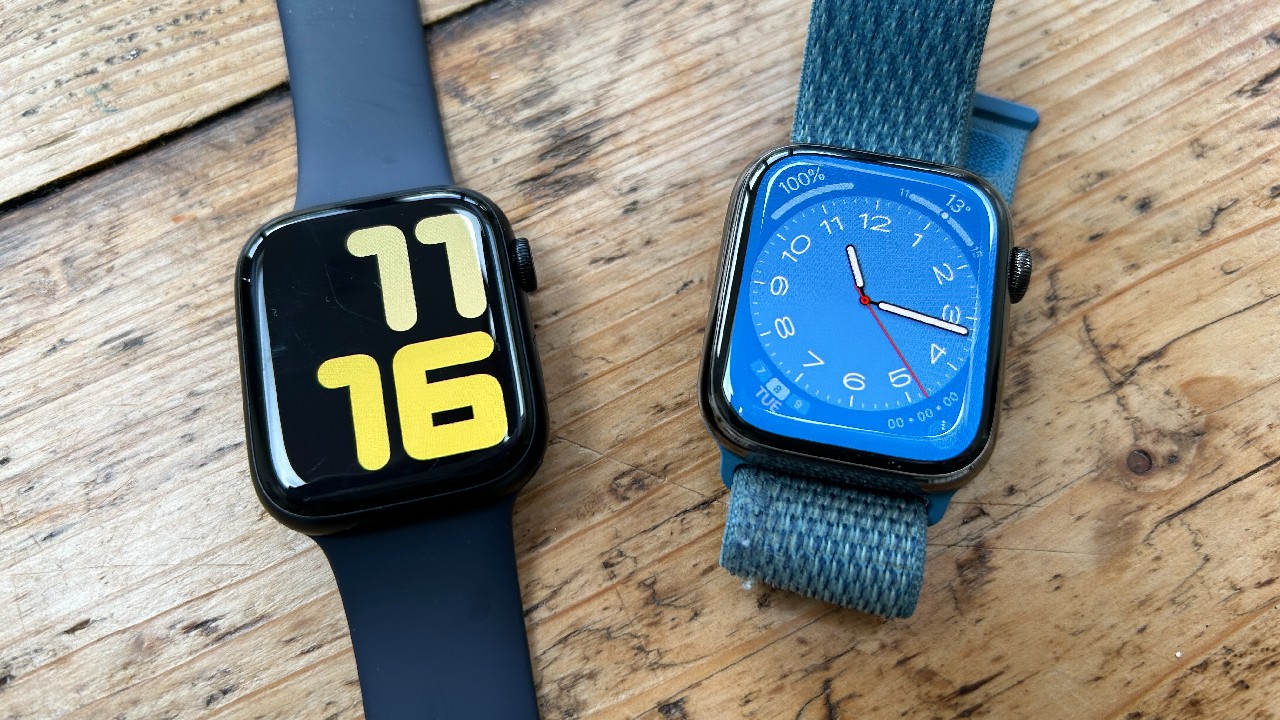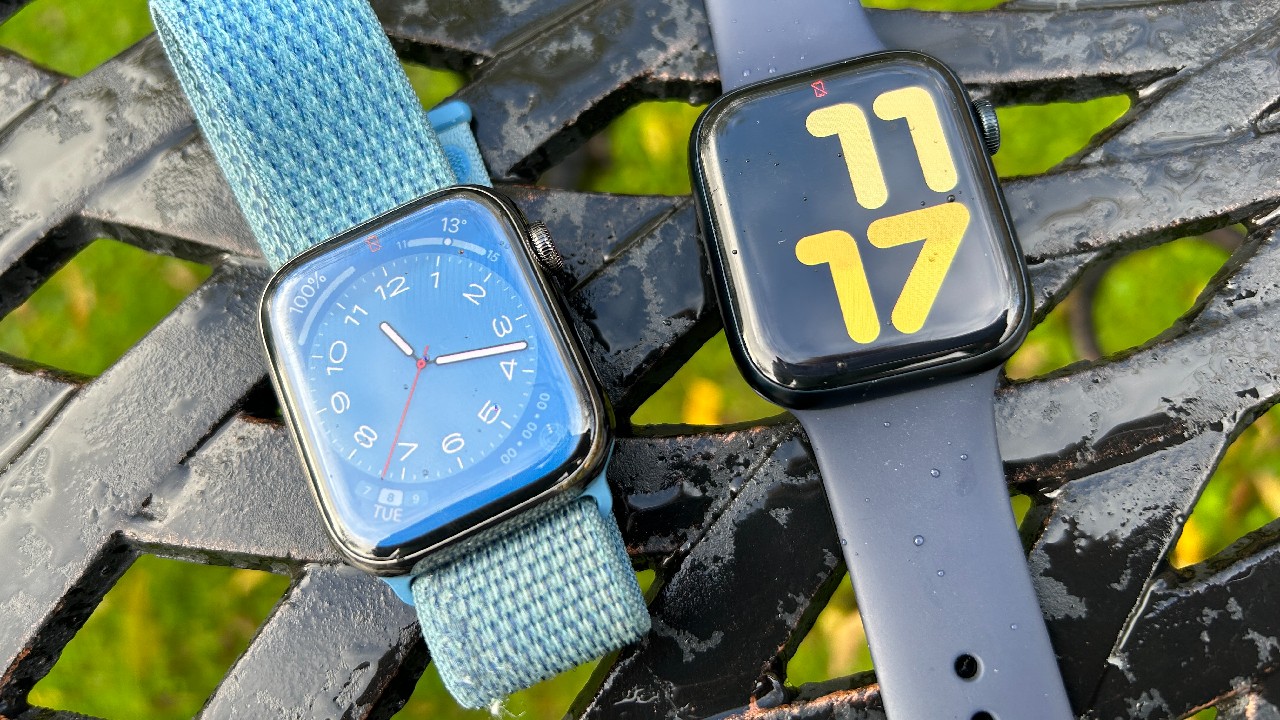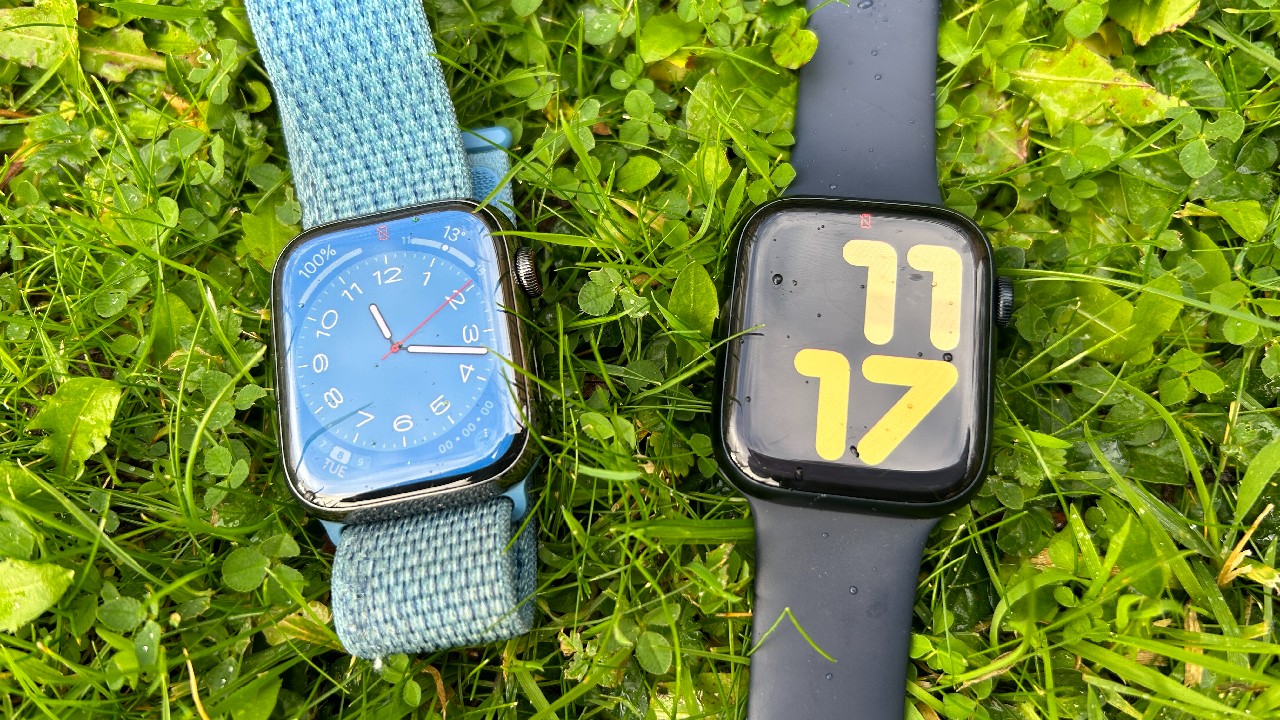Apple Watch Series 8 Vs Apple Watch Series 7
The Series 8 has only a couple of small upgrades on the Series 7, so your best option is to look for a reduction on the older watch

The major update to the Apple Watch in 2022 was not the new Series 8, but the Apple Watch Ultra, an entirely new watch that sits at the top of the range and offers longer battery life, a more rugged design and an extra button.
For its part, the Series 8 was about as small an update on the Series 7 as is possible, with Apple adding a skin temperature sensor to the watch and a new accelerometer that can detect car crashes. With that in mind, I’d certainly be hunting for a deal on the Series 7 if choosing between the two watches.

The Apple Watch released in 2021 has most of the same hardware as the Series 8 and benefits from the watchOS 9 software update, which improves the sports tracking on the watch considerably.
For
- Often in sales
- Same design and software as Series 8
Against
- No skin temperature sensor
- No crash detection

A skin temperature sensor is the headline update to the Series 8, which is otherwise almost entirely the same as the Series 7.
For
- Latest watch
- Skin temperature sensor
- Crash detection
- Better menstrual tracking
Against
- More expensive
Apple Watch Series 8 Vs Apple Watch Series 7: Price And Availability
The Apple Watch Series 8 launched on 16th September 2022 and costs from $399 in the US and £419 in the UK for the 41mm watch, and from $449/£449 for the 45mm. If you opt for the cellular versions of the watch it costs an extra $100/£100.
The Series 7 is no longer available to buy from Apple, but is still being sold by major retailers like Amazon, Walmart and Best Buy in the US, and Amazon, John Lewis and Currys in the UK. The RRP is from $399/£369 for the 41mm watch and from $429/£399 for the 45mm, but the Series 7 regularly features in sales now the Series 8 is available.

What’s New On The Apple Watch Series 8?
Rather than detail the design and performance of the two watches as we normally do when comparing generations, in this case it’s more useful to sum up the small updates Apple has made on the Series 8. Other than the below, both watches are exactly the same in design and performance. Our reviews of the Apple Watch Series 8 and Apple Watch Series 7 provide a lot more detail on both.
The major hardware upgrade is the temperature sensor on the Series 8. This measures the temperature of the skin at your wrist overnight and tells you how far above or below your baseline it is. The baseline is set during the first few days of wearing the watch.
A higher-than-usual skin temperature can indicate that you are sick (or that you had a heavy night on the booze). During my testing of the Series 8 I suffered a bout of COVID-19 and it was interesting to see how the sensor picked up the rise in my skin temperature throughout the illness.
- The Apple Watch Successfully Tracked My Skyrocketing Temperature When I Had Covid

The main benefit of the temperature sensor is, however, an improvement in the accuracy of Apple’s women’s health-tracking features. The watch will now estimate when you have ovulated, which then improves the accuracy of period predictions on the watch, and it will also alert you if you deviate from your normal cycle.
Another new feature on the Series is crash detection for when you are in a vehicle. The Series 7 is able to detect if you fall during runs or bike rides, but the Series 8 has a new high-G accelerometer and an improved gyroscope which means it can detect if you are in a car crash. It will then alert your emergency contacts and connect you to emergency services.
The other notable changes that arrived on the Apple Watch this year are all part of the watchOS 9 software update. All Apple Watches from the Series 4 onwards get this software update, so it’s not a point of differentiation between the Series 7 and 8, but key upgrades include a new triathlon mode and more detailed run tracking, including a structured workout builder.
Get the Coach Newsletter
Sign up for workout ideas, training advice, reviews of the latest gear and more.

Nick Harris-Fry is a journalist who has been covering health and fitness since 2015. Nick is an avid runner, covering 70-110km a week, which gives him ample opportunity to test a wide range of running shoes and running gear. He is also the chief tester for fitness trackers and running watches, treadmills and exercise bikes, and workout headphones.
Coros Vertix 2S Review: The Garmin Fenix Rival Gets Some Useful Upgrades
How To Pick The Best Garmin Watch For You
